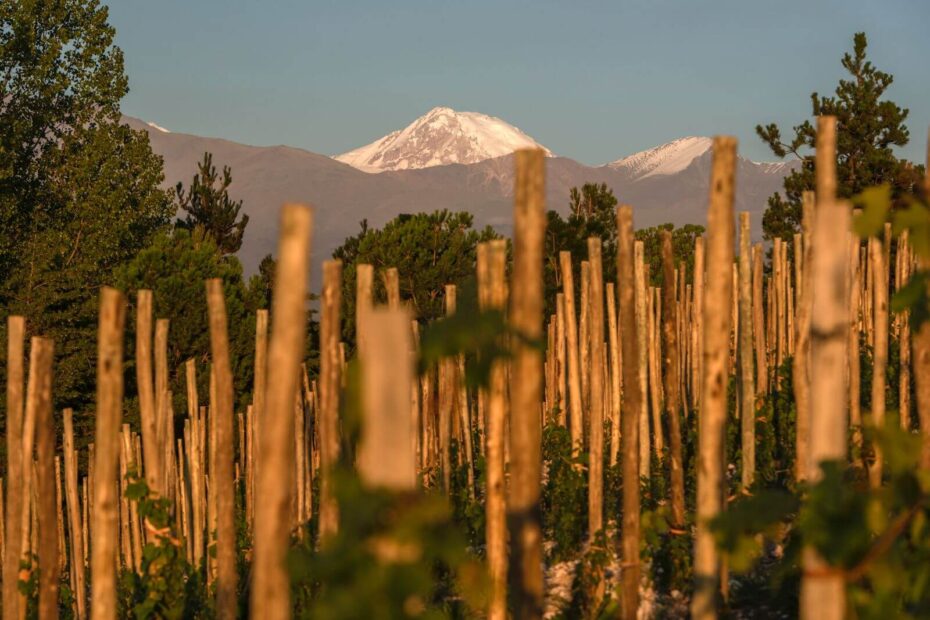We like to define the course of a harvest by going back to the moment that marked the beginning of a new year. Physiologically speaking, a vintage begins with the differentiation of flower primordia, which takes place in the spring of the pre- preceding year. For instance, for the 2023 harvest, this started happening in the spring of 2021.
That spring was rather wet, and some clusters suffered the attacks of mildew, something quite unusual when looking backwards. Summer presented similar conditions to the spring, with humidity levels that were above the usual. Eventually, we arrived at the 2022 harvest with a mild weather, mainly cool and dry. This harvest was developing normally until the exceptional early frost that took place in the morning of March 30, 2022.
So far, I have listed a number of events in order to demonstrate the unpredictable nature of the climate. Nevertheless, we should note that the early frost that was previously mentioned did not have an influence in the 2023 harvest other than on the new plantations that had not finished setting their buds, which caused losses and the irregular establishment of new vines, especially for those producers who had planted in Valle de Uco.
On October 9, October 30 and November 1, frosts hit almost the entire winegrowing regions again. These frosts brought the 2023 production down to historically low levels. Until last year, the 2016 and the 2017 vintages were the first and second lowest vintages of Argentina’s history, but 2023 set a new record.
In February, the INV (Instituto Nacional de Vitivinicultura) projected a decrease in the production of 23% in Mendoza and 21% in the country, with an expected 1530 million kg of grapes to be harvested this year. This number already differed from past harvests, which usually exceeded 2000 million kg. In April, after the harvest concluded, the INV finally reported a production of 1437 million kg, which meant an even greater drop than expected. In fact, Mendoza suffered a 25.5% decrease, which led to its lowest harvest since 1957 (956 million kg).
This scenario has generated a great demand for all varietals, especially for whites, which were the most affected by the cold weather because of their short cycle. Therefore, prices have increased and reached historical records. The price per kilogram will surely be the highest we can remember in the last decade.
Other than these frosts, the 2023 season has been very dry, with very little rainfall recorded during spring and summer. We experienced long heat waves, especially during the last two weeks of February, when veraison was already over, and right into March, when unusually high temperatures continued even at night. This accelerated the grapes ripening process, and the harvest began between a week and 10 days earlier than the historical average.
In some areas, the vines are exhibiting symptoms of stress due to high temperatures and water deficit. This had nothing to do with soil types but vineyard management (especially irrigation), since healthy vineyards and grapes of excellent quality have been observed in areas that, due to their poor, demanding soils, require precision management. Thanks to the dry weather, the health of the grapes has been good overall.
Another unusual event occurred on February 19, 2023, when a new, extraordinarily early frost affected some low areas of the valleys (El Cepillo and San Pablo in Valle de Uco; Agrelo in Luján de Cuyo).
The weather continued to be dry and hot until some mild rains occurred towards the end of March and the beginning of April (although very few grapes had not been picked by then). In Gualtallary, for example, rainfall between veraison and harvest was very low, reaching no more than 40-50 mm in our vineyards. If we take May 2022-April 2023 into consideration, precipitations only reached 201mm, which means a 30% decrease compared with the average of the last eight years (291mm).
Prior to these rains, sugar accumulation had been occurring at a brisk, steady pace. However, after these rains, the vines went to a kind of blockage where the sugar accumulation stopped its rhythm. Therefore, potential alcohol of the wines produced with these grapes was limited. In fact, when the reds were racked, we noticed that the alcohol content was lower than one would expect for a warm year.
This will be a year that will be remembered for its irregular weather and the very low production of early, healthy grapes, which lead to the anticipated conclusion of the harvest.
Winemaking is proceeding really well, and we expect wines of good quality, with very expressive aromas, various fruit nuances at different degrees of ripeness and a bit less longevity.
